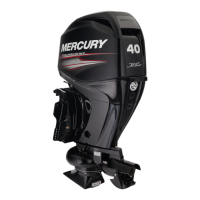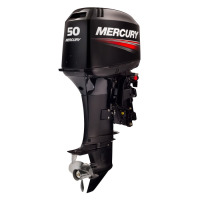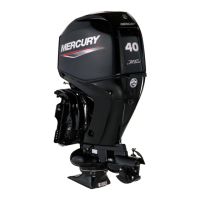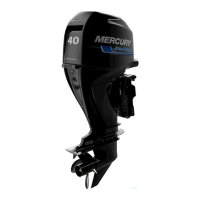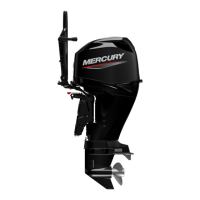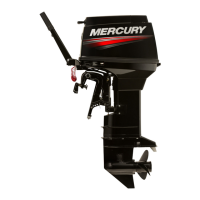MANUAL TILT ASSIST
90-857046R1 NOVEMBER 2001 Page 5C-5
Up Circuit
With the engine in the down position, the accumulator piston (d) will be at the top of the accu-
mulator (c) with the gas at maximum pressure. To raise the engine, the camshaft lever (f)
is rotated all the way down. The internal shaft connected to the camshaft lever will move the
push rods, opening the accumulator check valve (e), both fast transfer valves (h & j) and
the down circuit slow transfer valve (i). As the operator lifts the engine, oil, under pressure
inside the accumulator, will flow around both the slow transfer valve (i) and the down circuit
fast transfer valve (h). Oil flows into the bottom of the tilt cylinder forcing the memory piston
(m) into the shock piston (n) and then forcing the shock rod up and out. Oil above the shock
piston exits the cylinder (l) through an interconnecting passage along side of the cylinder
and returns into the manifold (g). Inside the manifold the oil flows past the groove in the
surge valve (k), through the up circuit fast transfer valve (j) and mixes with the oil flowing
from the accumulator into the up cavity. With the engine in the correct position, the camshaft
lever (f) is rotated up and the push rods allow the check valves (e, h, i, & j) to close. The
closed check valves prevent the oil from traveling between cavities and locks the engine into
position.

